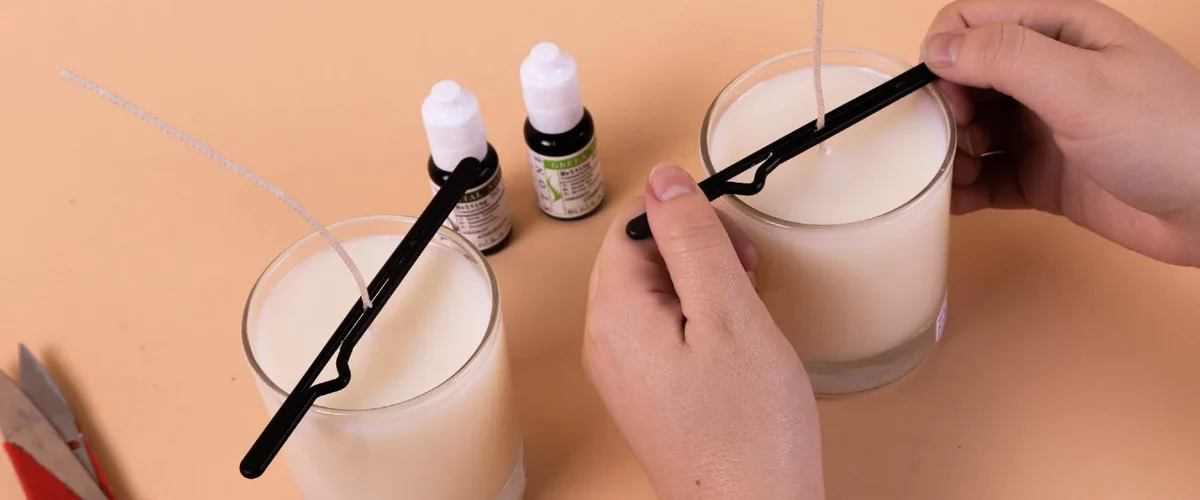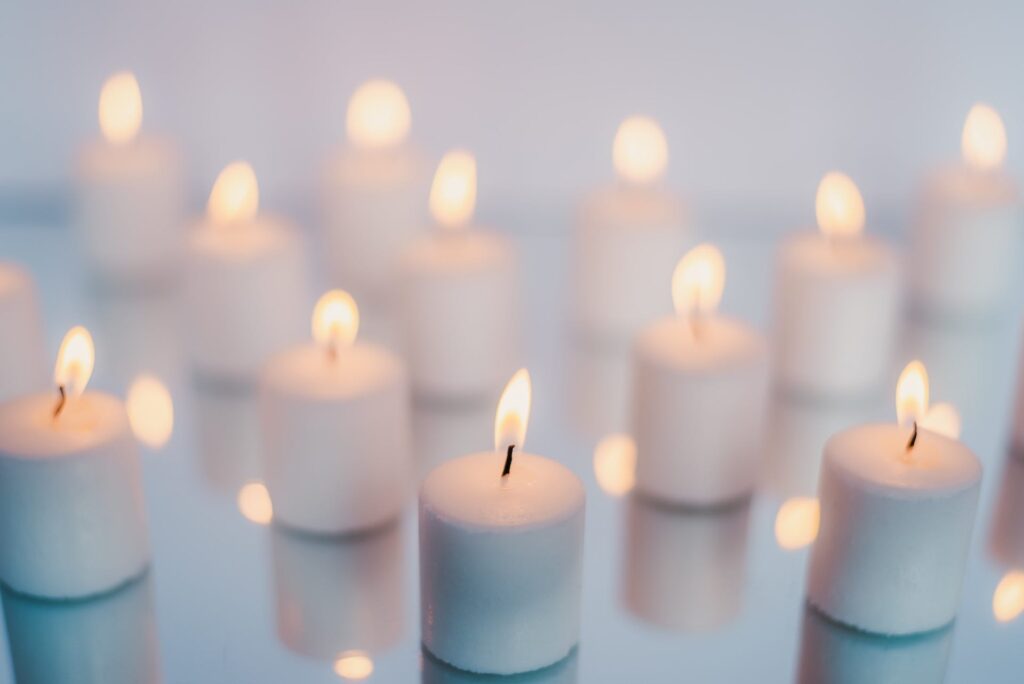Top Candle Kit Essentials for DIY Enthusiasts

Candle making is a popular hobby for DIY enthusiasts. Whether you enjoy creating unique home decor pieces or love the cozy ambiance that candles provide, having the right candle making essentials is crucial for successful projects. In this article, we will explore the top candle kit essentials that every DIY enthusiast should have. From understanding the basics of candle making to advanced techniques, we’ll cover everything you need to know to create beautiful and fragrant candles.
Understanding Candle Making Basics
Before diving into the world of candle making, it’s essential to grasp the basic concepts. One of the fundamental components of candle making is wax. The type of wax you choose can greatly affect the final result of your candles. Beeswax, soy wax, and paraffin wax are some popular choices among candle makers. Each wax has its own specific characteristics, such as burn time and scent retention.
By having the right candle kit essentials, understanding the basics, selecting the right fragrance and color, practicing safety measures, and exploring advanced techniques, you can create beautiful and personalized candles that fill your space with warmth and ambiance.
When selecting wax for your candles, it’s important to consider not only the aesthetic qualities but also the environmental impact. Beeswax, a natural and sustainable option, is favored by eco-conscious crafters for its clean-burning properties. Soy wax, being biodegradable and renewable, appeals to those looking for an eco-friendly alternative. Paraffin wax, while economical, raises concerns due to its non-renewable nature and potential emissions when burned.
The Role of Wax in Candle Making
Wax serves as the main ingredient in candles, providing the fuel for the flame. It is crucial to select a high-quality wax that burns clean and evenly. Beeswax, known for its natural properties, produces a warm, golden glow and a subtle honey scent when burned. Soy wax, derived from soybean oil, offers a longer burn time and excellent fragrance throw. Paraffin wax, a byproduct of crude oil refining, is widely used in the candle industry due to its affordability and versatility.
Additionally, the color of the wax can influence the overall look of your candles. Some waxes come in natural shades, while others can be easily dyed to create vibrant hues. Experimenting with different wax colors can add a creative touch to your candle-making projects, allowing you to customize them to suit any occasion or aesthetic preference.

Importance of Wicks and Their Types
While wax fuels the flame, wicks play a crucial role in candle making. They are responsible for drawing the melted wax up to the flame and ensuring a steady burn. Choosing the right wick is essential to ensure proper and efficient burning. Wicks come in various materials, including cotton, paper, and wood. Cotton wicks are the most common and provide a clean burn. Wood wicks create a crackling sound reminiscent of a fireplace, adding a cozy element to your candles.
Moreover, the size and type of wick can impact the way your candle burns. A wick that is too small may result in a tunneling effect, where the wax doesn’t melt evenly across the surface. On the other hand, a wick that is too large can cause excessive flickering and sooting. Understanding the characteristics of different wicks and how they interact with various waxes is key to achieving the desired burn performance in your candles.
Essential Tools for Candle Making
Alongside wax and wicks, having the right tools can make your candle making experience easier and more enjoyable.
When diving into the art of candle making, it’s not just about the wax and wicks; the tools you use can greatly impact the outcome of your creations. From shaping the wax to monitoring temperatures, each tool plays a crucial role in the process.
Click here to read more.
Molds and Their Role in Candle Design
Molds are used to shape the wax into different forms. There are various types of molds available, including metal, silicone, and glass. Each type offers unique design possibilities for your candles. Metal molds are durable and can produce smooth, professional-looking candles. Silicone molds are flexible, making it easy to remove the finished candle. Glass molds allow for creative layering and customization.
Exploring the world of molds opens up endless possibilities for candle design. Whether you prefer classic shapes or intricate designs, choosing the right mold can elevate your candles to a whole new level. Experimenting with different materials and sizes can lead to stunning visual effects and unique creations that stand out.
Thermometers and Their Importance in Candle Making
Accurate temperature control is vital in candle making. Thermometers help monitor the temperature of the melted wax and ensure it is within the optimal range for pouring. Having a reliable thermometer allows you to achieve consistent results and prevent issues such as frosting or uneven burning. Digital and mercury thermometers are commonly used in candle making.
Temperature precision is key in the delicate art of candle making. A slight variation in temperature can alter the texture and appearance of your candles. By investing in a quality thermometer and mastering temperature control, you can enhance the quality of your candles and create professional-grade products that burn evenly and beautifully. Read more about texture at https://colorsciencelab.textiles.ncsu.edu/current-research/texture-and-analysis-of-texture/
Selecting the Right Fragrance and Color
Fragrance and color are key factors in creating unique and appealing candles. The right combination can enhance the overall experience and set the desired mood. When crafting candles, it’s essential to consider not only the visual appeal but also the olfactory experience they provide. The scent and color of a candle can evoke memories, emotions, and even influence the ambiance of a space.
Adding a personal touch to your candles by customizing the fragrance and color can make them truly special. By understanding the properties of different scents and colors, you can create candles that reflect your individual style and preferences.
Exploring Different Types of Fragrances
When it comes to fragrance, the options are virtually limitless. From floral and fruity scents to warm and comforting aromas, you can choose fragrances that suit your preferences or create custom blends. Essential oils, fragrance oils, and botanical extracts are popular choices for adding scents to candles. Each type offers a unique aroma profile and potential therapeutic benefits.
Essential oils, derived from plants, not only provide delightful scents but also offer various wellness benefits. For example, lavender essential oil is known for its calming properties, making it ideal for relaxation candles. On the other hand, citrus oils like lemon or orange can invigorate and uplift the mood, perfect for creating an energizing atmosphere.
Choosing the Right Color for Your Candle
The color of a candle can have a significant impact on its aesthetic appeal. Whether you prefer vibrant and bold hues or subtle and elegant tones, there are various color options available. Candle dyes, liquid colorants, and natural pigments can be used to achieve the desired color. Experimenting with different color combinations can result in stunning and visually appealing candles.
Color psychology plays a crucial role in candle making. For instance, blue and green hues are often associated with tranquility and relaxation, making them suitable for bedroom or spa candles. In contrast, warm colors like red and orange can create a cozy and inviting atmosphere, perfect for living spaces during colder months.
Safety Measures in Candle Making
Candle making involves working with heat and potentially hazardous materials. Safety should always be a top priority to protect yourself and your surroundings. Click here to find more about hazardous.
When embarking on a candle making journey, it is essential to delve deeper into the safety measures required for a smooth and secure process. Understanding the intricacies of handling various materials and tools can significantly reduce the risk of accidents and ensure a successful outcome.
Safe Handling of Candle Making Materials
It is important to handle candle making materials with care. This includes wearing appropriate protective gear such as gloves and safety glasses when dealing with hot wax and fragrance oils. Additionally, storing flammable materials properly and keeping a clean and organized workspace can help prevent accidents.
Furthermore, taking the time to familiarize yourself with the properties of different waxes, dyes, and scents can enhance your understanding of how these elements interact during the candle making process. By being aware of potential reactions or hazards, you can adjust your handling techniques accordingly and ensure a safer environment.
Fire Safety Precautions for Candle Makers
As candles involve an open flame, it is crucial to prioritize fire safety. Always keep a fire extinguisher nearby and never leave burning candles unattended. Trim wicks to an appropriate length to prevent excessive flame height, and avoid placing candles near flammable objects. Educating yourself on fire safety procedures can help ensure a safe and enjoyable candle making experience.
Moreover, exploring the science behind candle combustion and understanding the behavior of different waxes when lit can provide valuable insights into how to mitigate fire risks. By grasping the principles of fire dynamics and applying them to your candle making practices, you can create a secure environment where creativity can thrive without compromising safety.
Advanced Candle Making Techniques
Once you have mastered the basics of candle making, you can take your skills to the next level by exploring advanced techniques.

Layering Techniques for Multicolored Candles
Layering different colored waxes can create beautiful and visually appealing candles. By pouring layers of different colors and allowing each layer to cool before adding the next, you can achieve stunning gradient effects. With careful planning and creativity, you can create candles that are true works of art.
Experimenting with different pouring techniques can also elevate your multicolored candles. Try creating intricate designs by pouring the wax in a zigzag pattern or using a swirling motion. These techniques can add depth and complexity to your candles, making them stand out as unique pieces of decor.
Creating Scented Candles with Essential Oils
Essential oils offer a natural and aromatic alternative to fragrance oils. You can create unique scented candles by blending different essential oils to achieve your desired aroma. From relaxing lavender to invigorating citrus, the possibilities are endless. Be sure to select high-quality essential oils that are safe for candle making and follow proper usage guidelines.
Enhance the sensory experience of your scented candles by incorporating dried flowers or herbs into the wax. Not only do these botanical additions add visual interest, but they also release subtle fragrances when the candle is lit. Consider using dried lavender for a calming effect or rose petals for a touch of romance. This extra touch will make your candles not only visually appealing but also captivating to the sense of smell.
In conclusion, candle making is a versatile and rewarding DIY activity. So, gather your materials, unleash your creativity, and start your candle making journey today!






